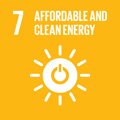- Docente: Carlo Angelo Borghi
- Credits: 6
- SSD: ING-IND/31
- Language: Italian
- Teaching Mode: Traditional lectures
- Campus: Bologna
- Corso: First cycle degree programme (L) in Computer Engineering (cod. 9254)
Learning outcomes
- Electromagnetic quantities and laws.
- Circui approximation, Linear electric circuits and methodologies for the analysis of circuits both in transient conditions and during regime conditions.
- Principles of operation of the main electromagnetic and electromechanical devices.
Course contents
The course has essentially a formative and basic character for the Engineering studies. The subject of teaching is subdivided into three chapters: Electromagnetism, Circuit Theory, Electric Machines.
Electromagnetism: Magnitudes and equations of the electromagnetic field: their definition and physical meaning - fundamental Lobbies of the Electromagnetism: laws of Maxwell, law of Gauss and law of divergence, law of conservation of the charge - laws of material bond.
Circuit theory: circuit element and electric circuit, Kirchhoff's laws and descriptive laws of the ideal elements: the resistor, the capacitor and the ideal inductor, the independent generators and the piloted generators - Methods of circuit analysis: general method of analysis , method of elimination of tensions, method of nodes, principle of superimposing effects - Transfer function, Thèvenin theorem, Norton's theorem - Tellegen's theorem and power adversities - Sinusoidal regime: phasor, Kirchhoff’s lows in the time and the phaser domains, series and parallel resonance, powers active and reactive, the rephasing of a two-port - Frequency response and main passive filters - Three-phase systems - Magnetic circuits, auto and mutual induction coefficients, magnetic energy and magnetic force calculation, ferromagnetic materials.
Electric Machines: The Transformer - General Methods for the Study of Rotating Machines, the Rotating Field - The Asynchronous Machine and Synchronous – Continuous Current Machines - Synchronizing Machines.
Exercises: Exercises will be solved during the lessons and the solution of some of them during the study are suggested. They are: DC current, AC current and transient exercises. Many examples of them are in the web site of the teacher "http://www.die.ing.unibo.it/pers/borghi/didattica.htm".
Readings/Bibliography
Lecture notes prepared by the teacher, the slides projected during the lectures and the exercises are available on the web site "http://www.die.ing.unibo.it/pers/borghi/didattica.htm".
The following texts are recommended for consultation:
- K. Alexander and M.N.O. Sadiku, “Fundamentals of Electric Circuits”, McGraw Hill, New York, 2009
- G. Rizzoni, “Principles and Applications of Electrical Engineering”, McGraw Hill, New York, 2007
- F. Ciampolini: “Elettrotecnica generale”, Ed. Pitagora, Bologna
- P.R. Ghigi, M. Martelli, F. Mastri, “Esercizi di Elettrotecnica”, Ed. Esculapio, Bologna
The following texts are recommended for supplementary in-depth consultation:
- C.A. Desoer, E.S. Kuh, “Fondamenti di teoria dei circuiti”, Ed. Angeli, Milano
- L.O. Chua, C.A. Desoer, E.S. Kuh, ”Circuiti lineari e non lineari”, Milano
- J.D. Jacksoni,"Classical Electrodynamics",John WWiley & Sons, New York, 1975
- J.A. Stratton, "Electromagnetic Theory", McGRAw-Hil New York
Teaching methods
The course is based on theoretical lectures and exercises held by the teacher.
It is also recommended, in addition to the exercises held in class, to personally solve during the preparation of the course, exercises of the type of ones solved by the teacher.
Assessment methods
The exam consists of a written test that covers both theoretical questions and exercises. The theory and exercises are exclusively on topics treated during the lessons.
If requested by the student, the written result with sufficient result can be supplemented by an oral interview.
The outcome of the written (and eventually oral) test is given given out of thirty.
Class attendance is not required. The attendance, however, if accompanied by the continuous comprehension of the topics covered, contributes very effectively to the preparation of the course.
Teaching tools
On the lecturer's website "http://www.die.ing.unibo.it/pers/borghi/didattica.htm" the lecture notes on the topics covered in class are available and exercises related to theory are proposed. Slides projected in class and further information on the course are given too.
Office hours
See the website of Carlo Angelo Borghi
SDGs




This teaching activity contributes to the achievement of the Sustainable Development Goals of the UN 2030 Agenda.
